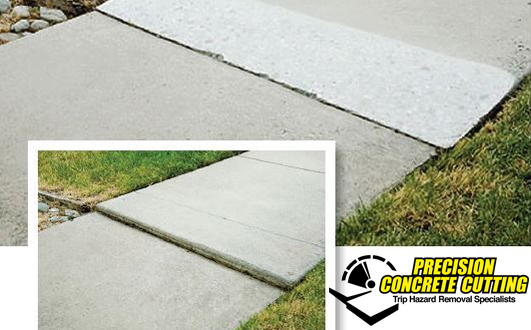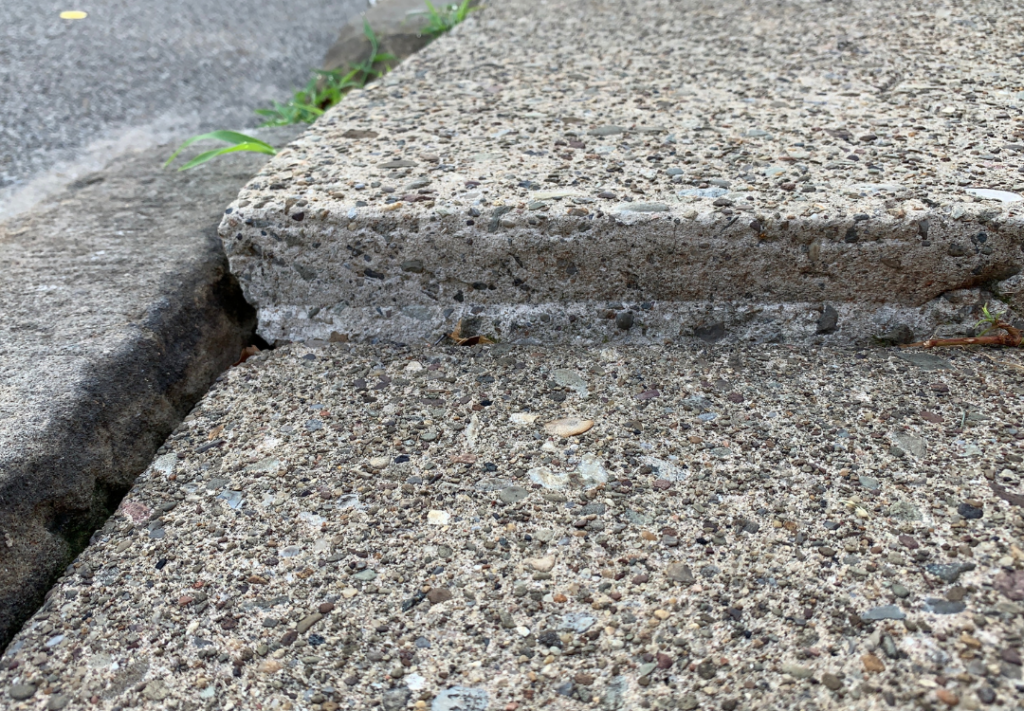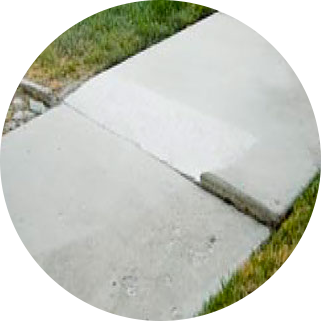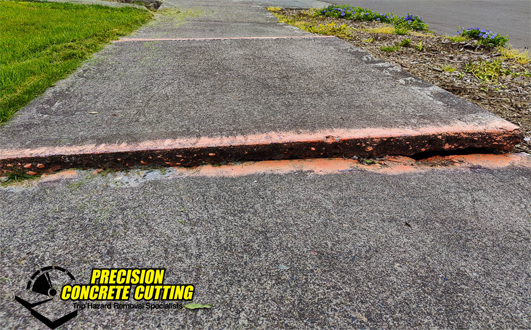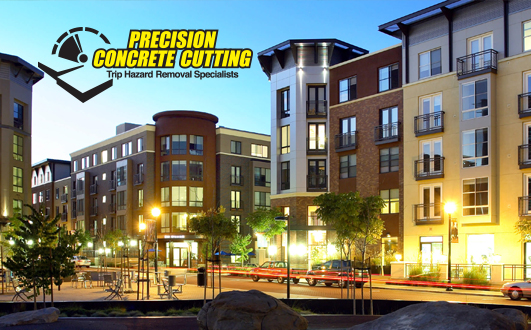Trip hazards on public sidewalks should not be taken for granted. Not only can a trip hazard result in a serious injury, but they also make it difficult for people living with disabilities to safely travel across the sidewalk. This is one of the biggest reasons why sidewalk repair companies offer trip hazard removal services to property managers and business owners, and management groups, among others. The next time you are looking for Sidewalk Repair Companies call Precision Concrete Cutting the Trip Hazard Removal Specialties. 866-792-8006
But what exactly creates or causes trip hazards to form in the first place? There is actually a variety of how trip hazards can begin to develop on concrete sidewalks. We’ll take a look at those along with what trip hazards actually are in this article. When you are ready to talk with an expert about removing trip hazards in your area, contact Precision Concrete Cutting today.
What Causes Sidewalk Trip Hazards to Form?
Though a concrete sidewalk is durable and hard, it is also easily broken. Generally, a concrete sidewalk installation happens on top of the base layer or soil. This sort of earthy foundation alone causes problems with shifting and stability.
When water starts to enter the soil, the absorption process begins. Absorbing water causes the earth to expand creating vulnerabilities. Similarly, as the water evaporates or filters further down, the soil begins to shrink and contract. Water runoff or rainwater begins collecting due to human activities that contribute greatly to this process.
The concrete sidewalk that sits atop the soil will attempt to change and adapt to its shifting foundation. This shifting will cause panels to push up against each other, forcing the sidewalk to become unlevel or uneven.
Whenever the sidewalk’s base or foundation starts to lose its structural integrity, concrete cracks will begin to form. The cracks will only worsen with time and use, creating more and more unlevel areas. There are also other contributing factors to take into consideration, such as tree burrowing animals, roots, and anything else that has the potential for affecting the layer of soil.
Exactly What is a Trip Hazard?
The definition of a trip hazard given by the government and the ADA (Americans with Disabilities Act) of 1990 is any vertical change of over ¼” or more at any crack or joint on a public walkway. Because of the strict regulations in place for ADA compliance, having a trip hazard on your property presents an obvious liability and increases the possibility of additional injury.
Fortunately, the advancements in sidewalk repair technology have given sidewalk repair companies the ability to make removing trip hazards much easier and faster than ever before. In the past the only reliable option not too long ago was to replace the entire sidewalk, alternative methods like concrete shaving and cutting have quickly become the industry standard.
Concrete cutting is one of the most cost-effective and practical solutions for sidewalk repair companies for removing trip hazards. Removing trip hazards employing this method is environmentally friendly, affordable, and minimally disruptive. Additionally, some municipalities even disperse grants to fix sidewalk problems because it lessens lawsuits from injury and at the same time in compliance with the ADA act.
If you’re looking for sidewalk repair companies in Greater Sacramento, San Francisco Bay Area, Monterey Bay, Central Valley, and North Bay to remove trip hazards completely, consider Precision Concrete Cutting your go-to local choice. Contact us if you would like to get a free quote or wish to learn more. To schedule an appointment or to speak with a staff member directly, call 866-792-8006
Sidewalk Repair Companies
Related Articles
Sidewalk Repair San Francisco CA

